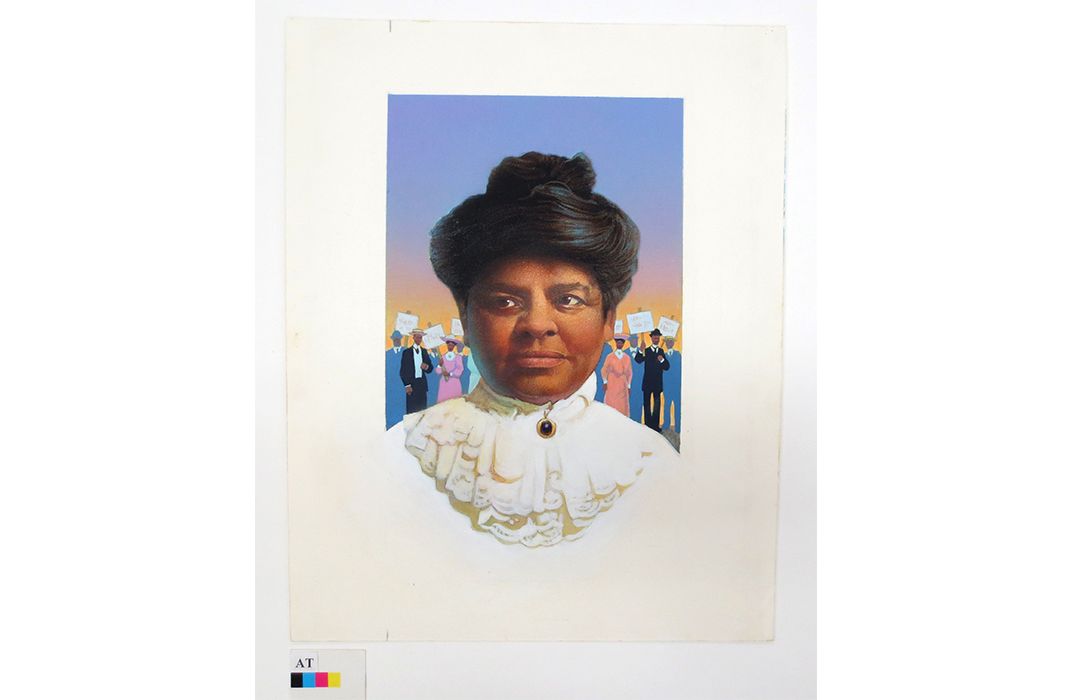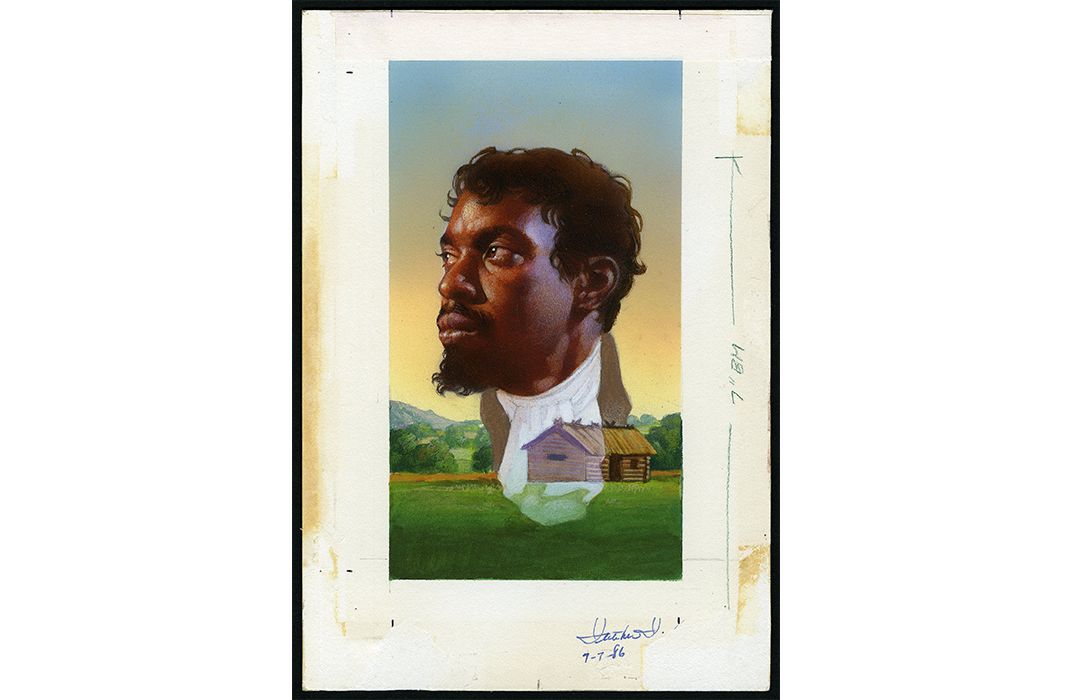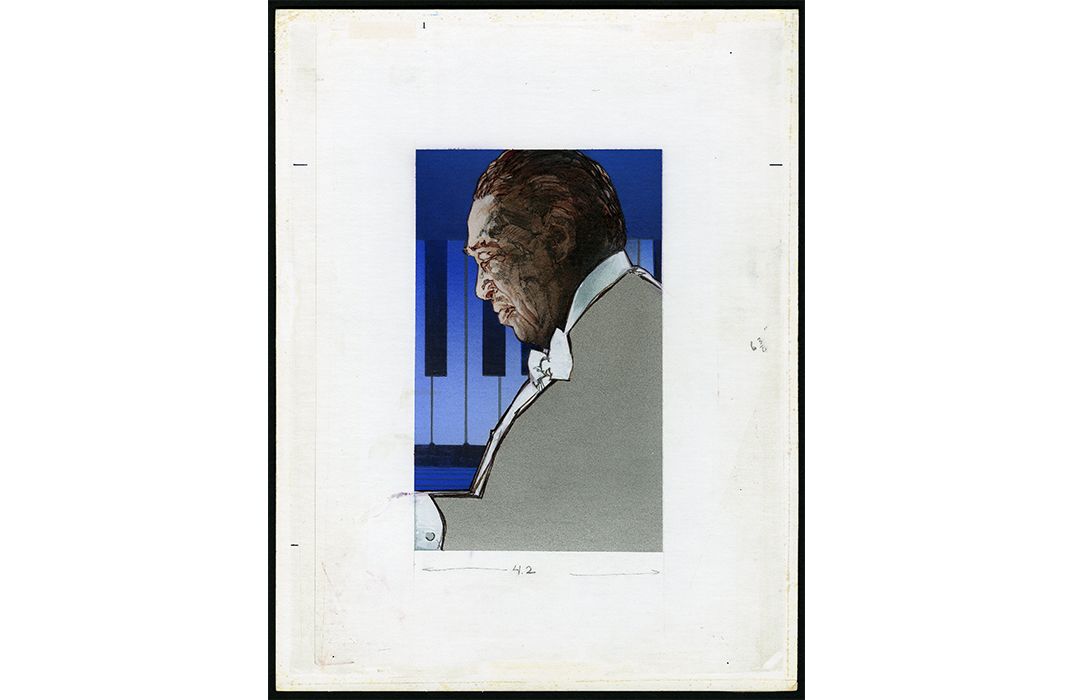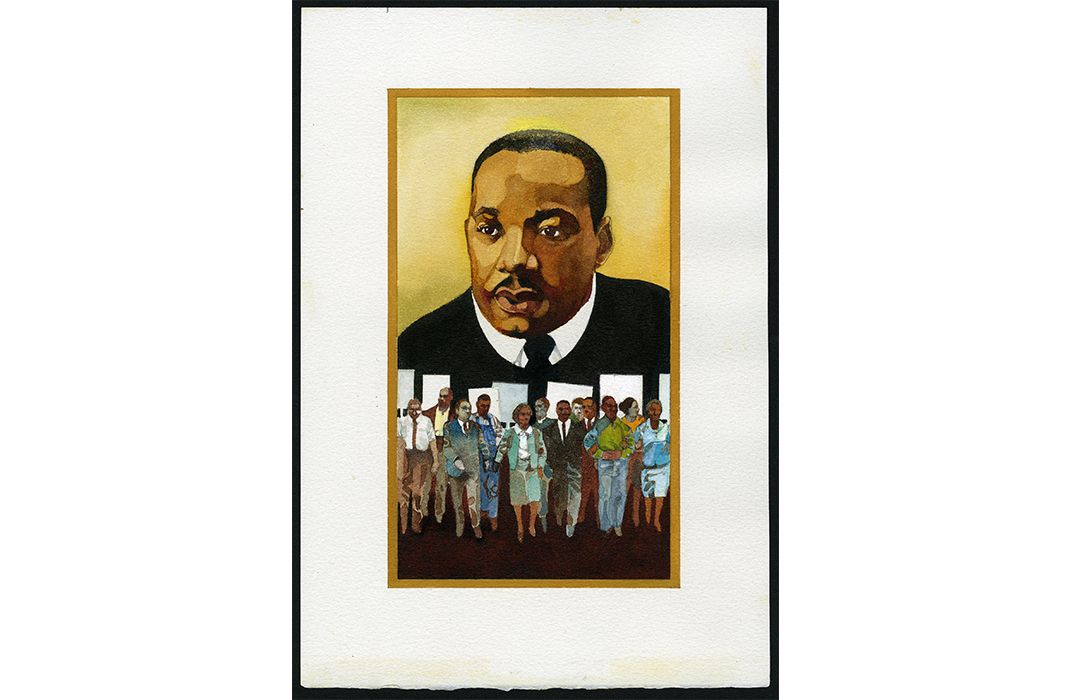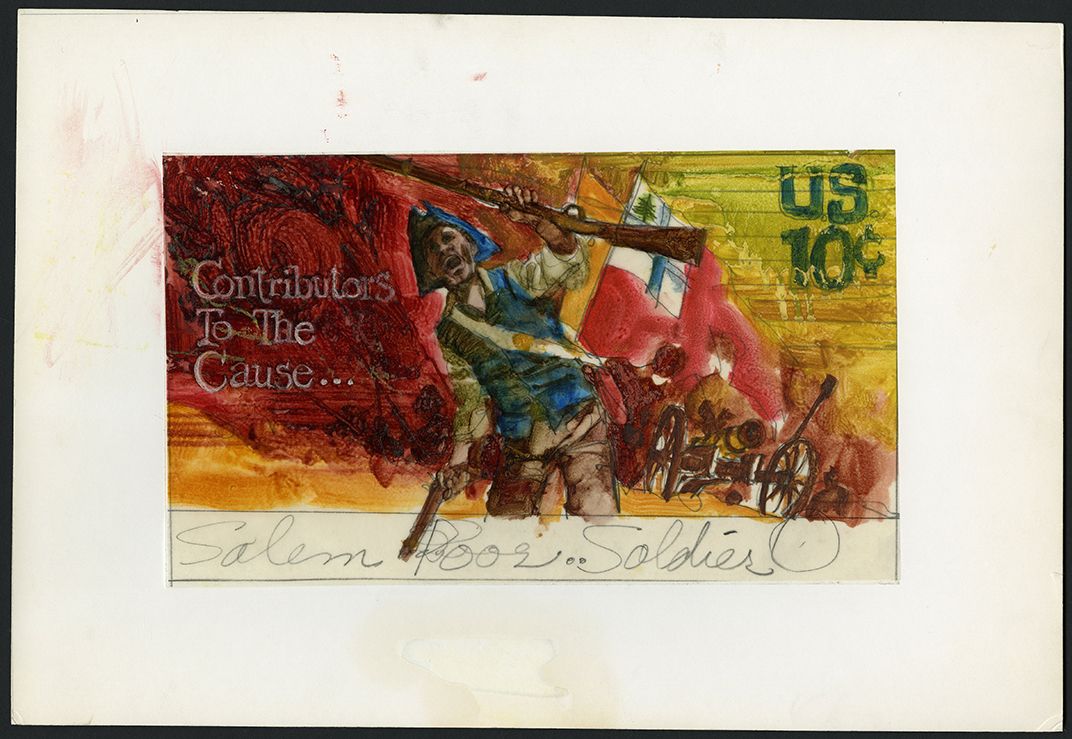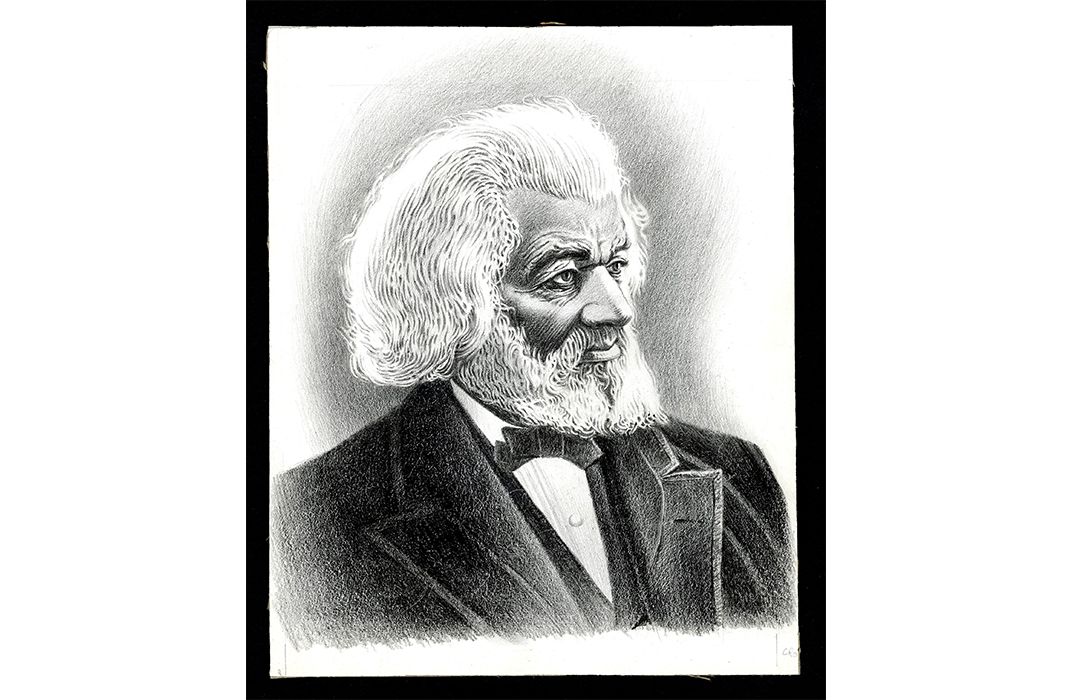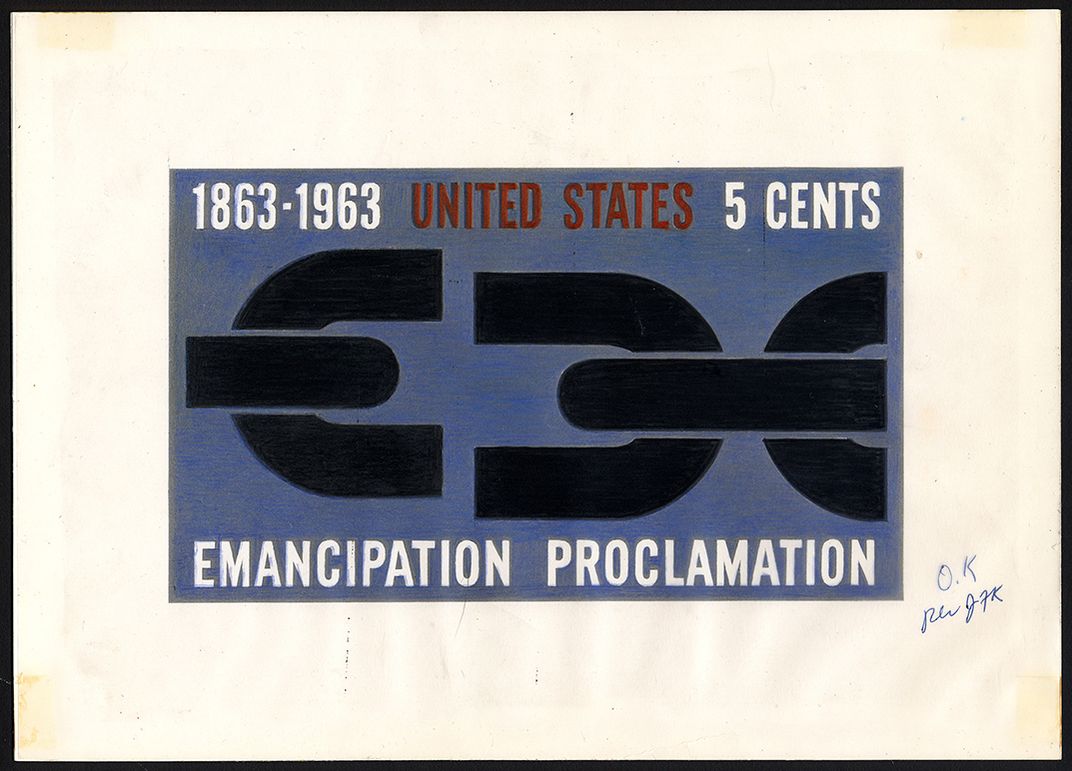Previously Seen on a Tiny Postage Stamp, These Beautiful Portraits of African-Americans Go on View
The artists who made them bring enormous dedication and talent to the artwork that adorns the nation’s mail
Seventy-six years ago, the Daughters of the American Revolution barred Marian Anderson from singing at Constitution Hall in Washington, D.C. Outraged, Eleanor Roosevelt resigned from the DAR and invited Anderson to perform on Easter Sunday at the Lincoln Memorial. Singing “My Country Tis of Thee” before of a crowd of more than 75,000, Anderson's performance marked a turning point in the historic battle for Civil Rights. Today Anderson’s legacy, continues through the Black Heritage postage stamps, the longest running commemorative series in U.S. history and featuring more than three dozen well-known African Americans dating from Harriet Tubman in 1978 to the recent 2015 stamp, depicting Robert Robertson Taylor, the country's first academically trained African American architect.
Known to be one of the most beautiful stamps in the series, the portrait of Marian Anderson was painted by Canadian artist Albert Slark, who has also created stamp portraits of Spencer Tracy, Betty Davis and Paul Robeson. His award-winning portrait of Anderson was exhibited at the Society of Illustrators 48th Annual Exhibition in New York City.
Now on display at the exhibition entitled “Freedom Just Around the Corner: Black America from Civil War to Civil Rights” at the Smithsonian's National Postal Museum through January 2016, the show features more than a dozen examples of source art for postage stamps. Although many belong to the Black Heritage Series, others hail from the popular Performing Arts Series, Distinguished Americans Series and the Literary Arts Series.
When Slark was asked to create Marian Anderson's portrait, he was given a black and white photograph that was taken before a performance in Stockholm, Sweden. Slark says the most challenging part of painting was figuring out her exact skin tone and recreating the black and white photo as a color image.
“I had to do a couple of things to accomplish this,” he says. “I went to the library and got as many colored photos as I could find. Then, I hired a model with similar skin tones to sit for me.” He posed the model in specific lighting and painted from life.
“I was thinking about how she [Anderson] was an opera singer and often on stage. I wanted to portray some sort of stage lighting,” Slark says. “I was trying to be as true to life as I possibly could.”
Slark also was commissioned to paint a portrait of Paul Robeson for a stamp, but the Post Office ended up using a photograph instead.
“The Paul Robeson painting is one of my favorite,” says curator Daniel Piazza. “It’s a gorgeous painting, but I believe the family wasn’t happy with it.”
The process of making a stamp can take years, starting from a group of appointees on the Citizens' Stamp Advisory Committee who makes recommendations to the Postmaster General. Once the individual is selected, the Stamp Development design staff commissions the artwork. In the case of explorer Jean Baptiste Point du Sable, the first permanent resident of Chicago, the illustrator had to reimagine du Sable’s visage because there were no known images of him.
“I want people to see this artwork and learn how much studying, research and work goes into creating those images on the stamps,” Piazza says. “It looks so easy on the small stamp, but many times it’s years in the making.”
The “Freedom Just Around the Corner: Black America from Civil War to Civil Rights” exhibition runs through February 15, 2016 at the National Postal Museum, marking 150 years since the end of the Civil War and the abolition of slavery in the United States. In addition to source art for stamps, the show features letters carried by enslaved Americans, mail sent by and to leaders of the civil rights movement and more than 100 items from the museum’s collection on display.
/https://tf-cmsv2-smithsonianmag-media.s3.amazonaws.com/filer/c4/ea/c4ea48df-11a6-4d4e-b485-93c841e3eb13/pmg_12_1209_1aweb.jpg)
/https://tf-cmsv2-smithsonianmag-media.s3.amazonaws.com/filer/d9/80/d9808805-dae3-4448-b3e0-4a4666716d7d/pmg_12_1136_1aweb.jpg)
/https://tf-cmsv2-smithsonianmag-media.s3.amazonaws.com/filer/af/1e/af1ebfb3-81c4-45f3-b3cf-8890cb7c1a9e/pmg_12_1121_1aweb.jpg)
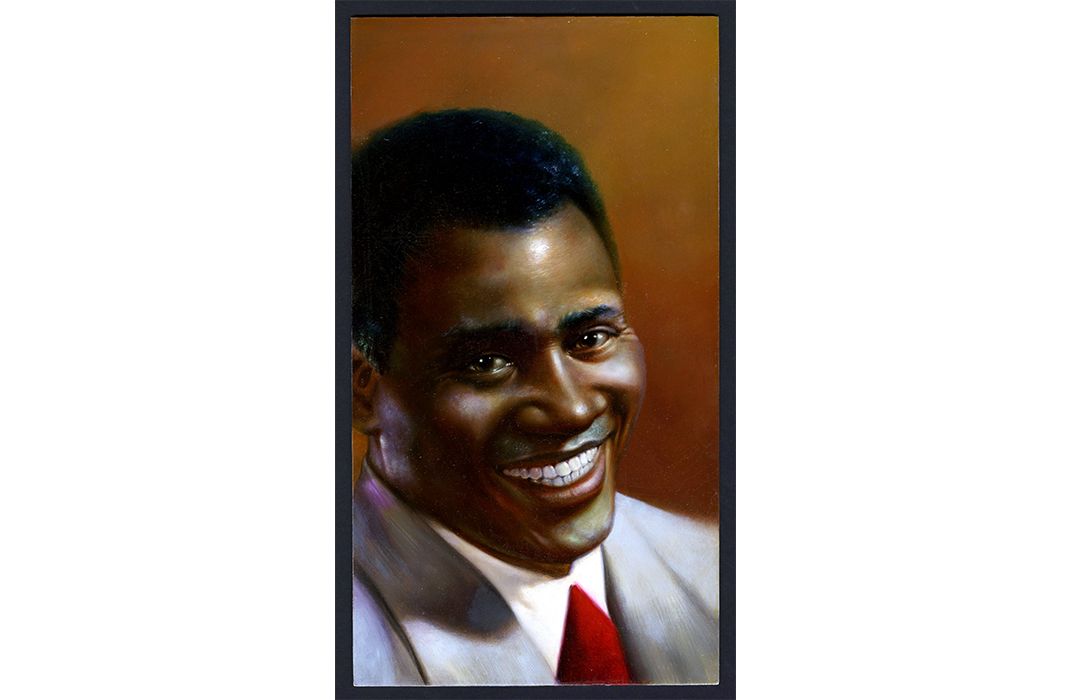
/https://tf-cmsv2-smithsonianmag-media.s3.amazonaws.com/filer/25/81/2581f336-da11-40c3-8b91-f397ca629994/pmg_12_1099_1bweb.jpg)
